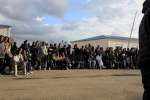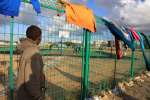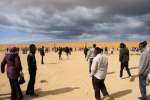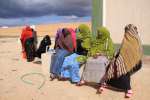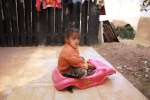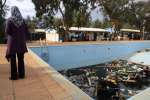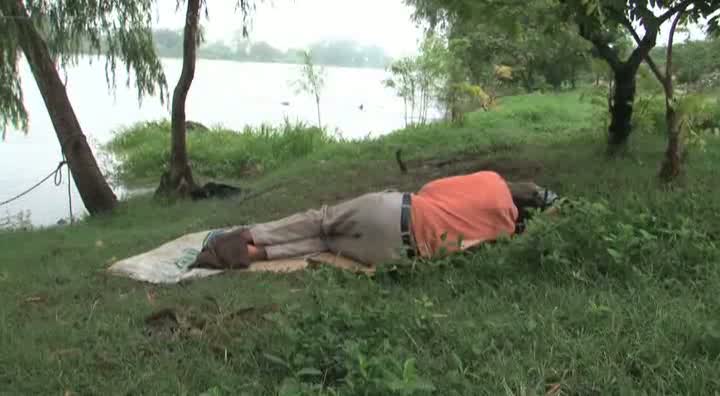- Text size
 |
|  |
|  |
| 
- Français
Africans and Asians attracted to Latin America as a migration route
News Stories, 10 November 2010
MEXICO CITY, Mexico, November 10 (UNHCR) – Yakpaoro is part of a new trend in South America. The refugee from Guinea is one of a growing number of Africans and Asians, many of them refugees, making their way to the continent before joining mixed migration routes from the south to the north.
UNHCR statistics show that so far this year between five and 40 per cent of total asylum applications submitted in various Latin American countries were lodged by nationals from Asia and Africa. In the past, these countries were almost exclusively hosting refugees from regional states, especially Colombia.
This new trend in the region as well, as the risks that people in migration flows face – kidnapping, extortion, rape and other serious human rights violations – will be discussed at an important meeting Thursday in Brasilia on refugee protection, statelessness and mixed migratory movements in the Americas. Senior UNHCR officials will join representatives from 20 countries at the gathering, to be hosted by Brazil's Justice Ministry.
Participants will look at developments in the region since the November 2009 meeting in Costa Rica on refugee protection and international migration. The Brasilia meeting will also launch UNHCR's 60th anniversary commemorations in the Americas.
Many of those making their way to South American countries from other continents are hoping to reach North America, either to join family members or to better their economic situation. But others, like Yakpaoro, are escaping persecution or conflict in their home countries – these people are of concern to UNHCR, especially as many of them are unaware of their asylum rights.
Yakpaoro was studying for a career in cinema or television when Guinea was rocked by a coup in late 2008. The young man took part in protests, but decided to flee after troops of the new junta launched a brutal crackdown on opponents.
"Some of my friends, who also participated in the demonstrations, were imprisoned. My brother, who was a cop, was also imprisoned. I didn't want to take any chances," he explained. Yakpaoro flew to Guatemala via Cuba and told immigration officials he was looking for a UNHCR office for advice on seeking asylum.
They told him there was no UNHCR office in Guatemala. After spending a couple of days wandering the streets of Guatemala City, he learned from other French-speaking foreigners that UNHCR had offices in Mexico and, like many migrants and refugees before him, he decided to cross the border.
He was detained in the Mexican border city of Tapachula, where UNHCR has registered more than 1,000 asylum applications since opening an office there in 2003 – around 40 per cent of all asylum applications lodged with the agency in Mexico. Yakpaoro applied for asylum and received refugee status after spending 100 days in a migration holding centre.
But while the Guinean feels safe, like others coming from Asia or Africa he faces many challenges in Mexico that South American asylum-seekers do not encounter. The biggest hurdle is language, which is essential for finding a job.
He started taking Spanish classes, but dropped out. "I can't attend class and look for a job at the same time," he said, adding: "I've been here for some months but I've been told there are no [job] vacancies." He concluded that "life as a refugee is an uncertainty."
It's not that much easier for those coming from Latin American nations along the well-worn mixed migration routes. They still make up the bulk of people heading from south to north, alongside those coming from countries such as Bangladesh, Democratic Republic of the Congo, Eritrea, Ethiopia, Iran, Pakistan Nepal, Nigeria, Sri Lanka and the Sudan.
Monica, a Colombian, fled her country and eventually reached Guatemala after being held and tortured in her country by members of an irregular armed group. She narrowly avoided being forced into a life in the sex trade before fleeing to Mexico with seven other undocumented migrants and applying for asylum with UNHCR help after a costly 15-day trek with smugglers.
Yakpaoro and Monica are but two of the many people caught in migration flows who need international protection. Twenty countries affirmed their commitment to help such people by signing the 2004 Mexico Plan of Action, which will be discussed and reviewed during Thursday's meeting in Brasilia.
UNHCR Representative in Mexico Fernando Protti Alvarado, while noting that the protection challenges in the region were "quite large," stressed that it was "crucial for authorities, particularly immigration officers, to identify asylum-seekers and refugees present within broader mass migration movements.
"Once this is achieved, we support the government's effort to protect and address the special needs of vulnerable groups, like unaccompanied children or female victims of trafficking," he added.
UNHCR works closely with civil society partners who help identify asylum-seekers, providing pro-bono legal counselling and addressing their basic needs. Cooperation is being developed with ombudsman offices and media to promote the rights of refugees, prevent discrimination and raise awareness about the challenges they face.
By Mariana Echandi in Mexico City, Mexico





